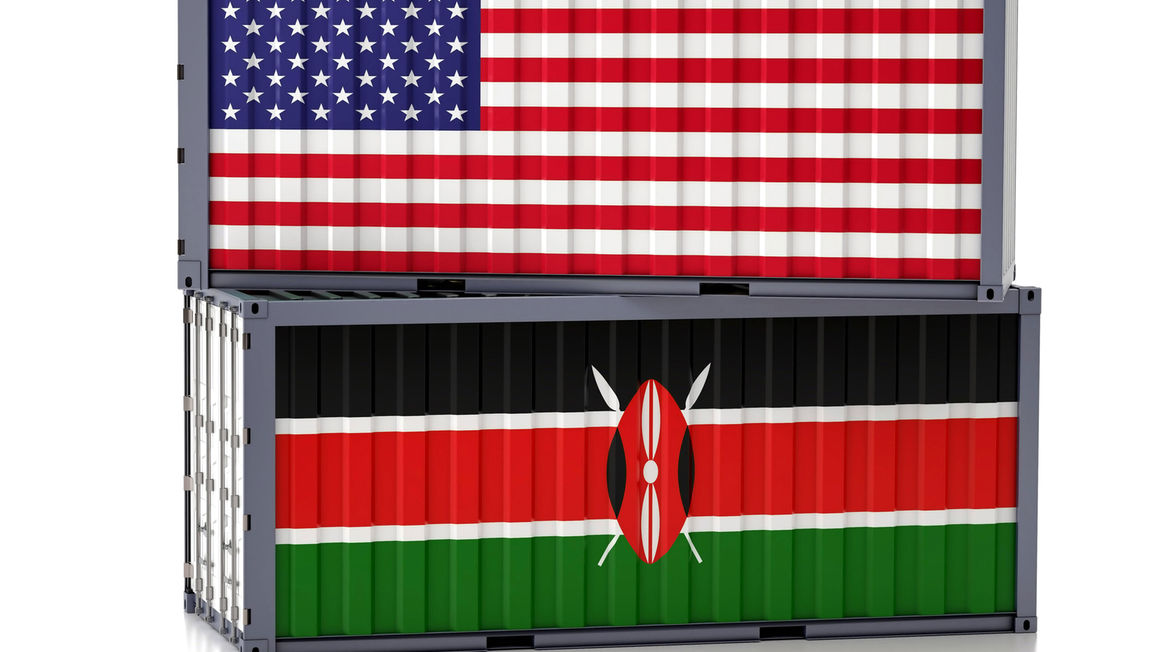
Summary
- The timing of the negotiations could not have been more opportune given the expected expiry of the African Growth Opportunity Act (Agoa) in September 2025.
- If Agoa expires without a tangible preferential trade agreement in place, the only way Kenya, as a developing country, can continue trading with the US is through the Generalized System of Preference (GSP).
Kenya is currently negotiating a free trade agreement (FTA) with the United States of America. This is in line with the Fourth Schedule of the Constitution, which vests functions on foreign affairs, foreign
policy, and international trade with the national government.The timing of the negotiations could not have been more opportune given the expected expiry of the African Growth Opportunity Act (Agoa) in September 2025.
If Agoa expires without a tangible preferential trade agreement in place, the only way Kenya, as a developing country, can continue trading with the US is through the Generalized System of Preference (GSP), in accordance with the General Agreement on Tariffs and Trade (GATT) 1994 or under Most Favoured Nation (MFN).
Over 90 percent of the tariff lines under GSP qualify for duty-free preferences under Agoa’s eligibility provisions. However, if Kenya’s trade with the US was to be governed by GSP, the country would be unlikely to sustain or improve her export volume into the US since GSP only promises preferential market access for 4,800 product lines, which is not necessarily duty-free.
Indices on revealed comparative advantage by World Bank and United Nations Conference on Trade and Development (UNCTAD) indicate Kenya enjoys bilateral comparative advantage with the US in agricultural products like tea and mate, fruits and vegetables, livestock and livestock products, coffee and coffee substitutes, sugar confectionery, cereals, spices, tobacco, hides and skins, margarine, jute and textile fibre, and concentrates of base metals.
Thirty percent of these products are Kenya’s frontier products, offering opportunity for product diversification and export promotion.
The country has the highest total factor productivity (TFP) in textiles, garments, non-metallic, basic metals, and machinery subsectors. As a measure of how efficiently resources into production process are converted to final goods and services, TFP is important in signalling sectors where government incentives and trade policy should be directed.
Under Agoa and the GSP, 78 percent of US exports face duty-related barriers while entering Kenya. Instituted in 1971, the GSP aims at supporting the trading environment in developing countries through, among others, supporting infant industries to improve productive capacity for long-term industrialisation and development. The US is among 13 countries that grant GSP preferences to developing countries like Kenya.
The Kenya-US FTA negotiations are aimed at creating a liberal, facilitative, and competitive investment environment. Investment negotiations are focused on four pillars covering promotion, protection, facilitation, and liberalisation.
Under the FTA, it is expected that investment restrictions will be lessened, creating incentives to US firms to target Kenyan sectors with the highest total factor productivity for foreign direct investment.
Given these are Kenya’s nascent sectors targeted to drive manufacturing, and food security and nutrition as enshrined in the Big Four Agenda, Kenya can consider pushing for simplification of procedural requirements under article XVIII(b) of GATTs 1994 on balance of payment measures to protect the sectors at intermediate and final goods level while considering slight liberalisation at the inputs stage where the country has constraints in endowment of raw materials.
A Kenya-US FTA would allow for a reciprocal bilateral trade, thus reducing tariff barriers. To reasonably support sectors facing the risk of enhanced competition, an exclusion criterion detailing what US goods and services should be allowed into the Kenyan market is necessary.
The criterion should factor in tariff lines classified as sensitive under East African Community’s (EAC) Common External Tariff (CET) and the Economic Partnerships Agreement between the EAC and the European Union (EU). Further, products from the highly subsidised US agricultural sector should be excluded from liberalisation in the trade agreement.
Kenya stands to benefit from technology, knowledge, and intellectual property transfers in sectors like services, agriculture, and manufacturing. Negotiators need to promote access to the US market for Kenya’s frontier products through more flexible rules of origin than it is currently under Agoa. Among the frontier products that need promotion include milk products, iron and steel products, pharmaceuticals, and paper articles.
To safeguard the EAC market while expanding the US market share, Kenya needs to inform the EAC Council of Ministers of the intention to have a free trade agreement with the US for consent.
To come up with an FTA that does not limit the potential of Kenya’s agricultural and manufacturing sectors to embrace foreign market-oriented production as envisioned in the country’s National Export Development and Promotion Strategy, the Big Four Agenda, and Vision 2030, there is need to draw lessons from other FTAs that the US has had with developing countries like Kenya.
The US-Jordan FTA is a good case study for drawing lessons. The 18-year-old FTA created over 50,000 new jobs within the first few years, attracted trade and foreign direct investments, and contributed to average annual GDP growth rate of seven percent to Jordan.
Under the FTA, Jordan exports more to the US than it imports. Jordan’s private sector representatives, especially chambers of commerce, manufacturers associations, consumer associations, and the academia played an important role in ensuring the FTA reflected the private sector’s needs. Like Jordan, Kenya needs to continue engaging the private sector to further inform the negotiations.
Mwatu and Malot are trade and foreign policy analysts at the Kenya Institute for Public Policy Research and Analysis (KIPPRA)




No comments :
Post a Comment